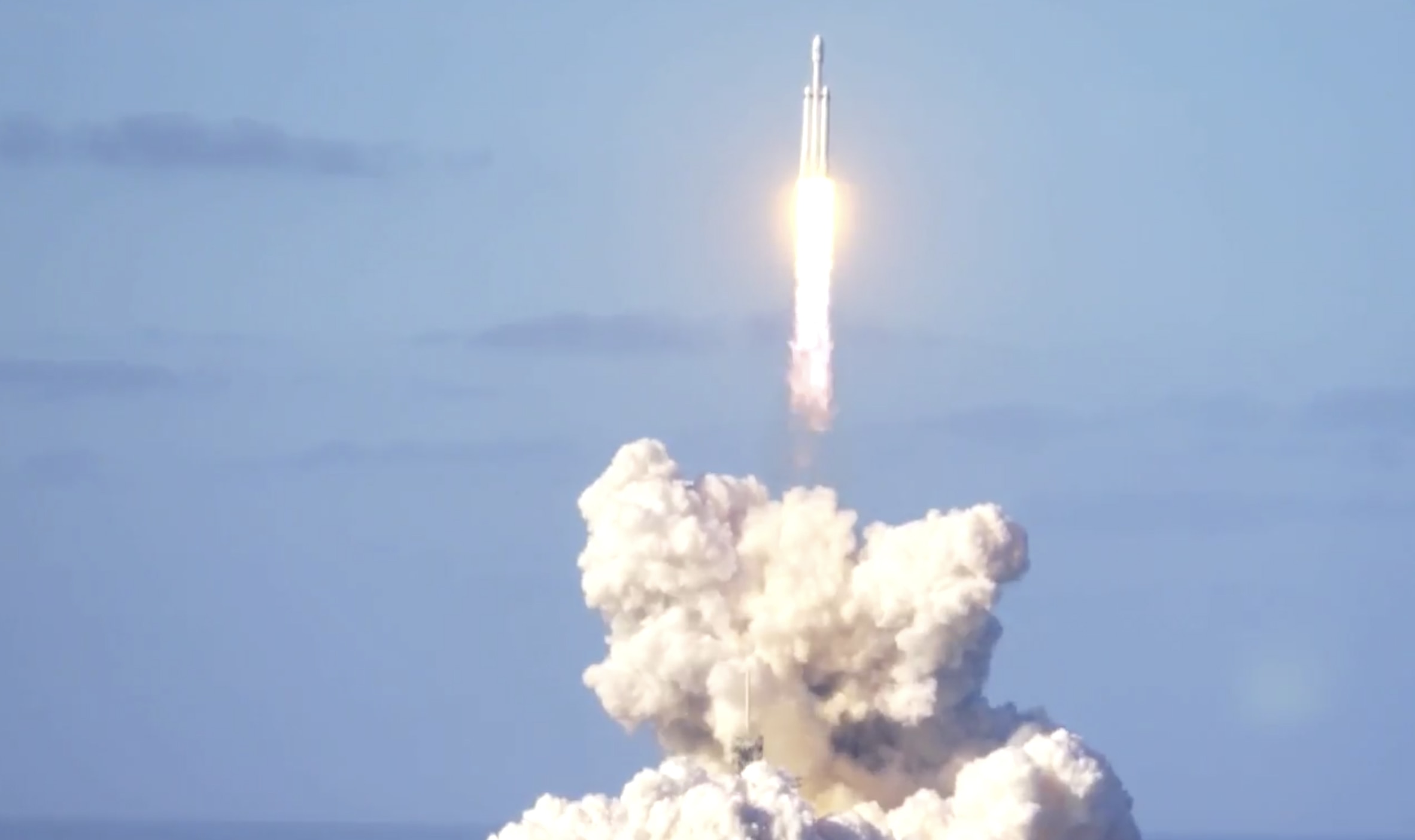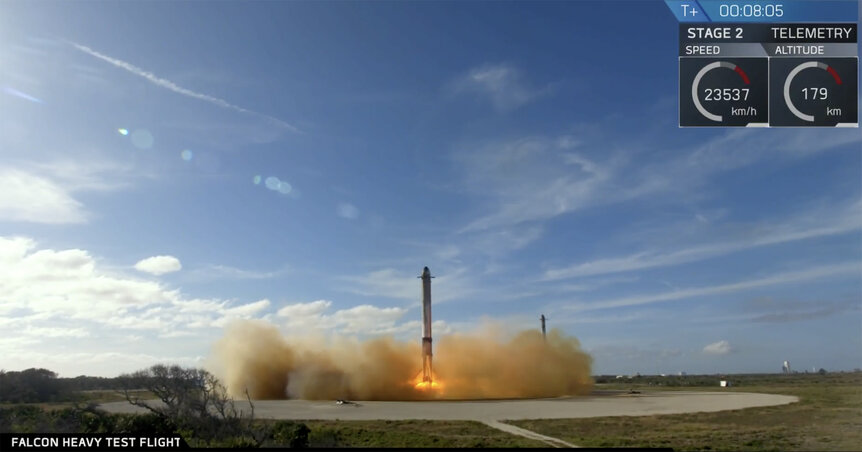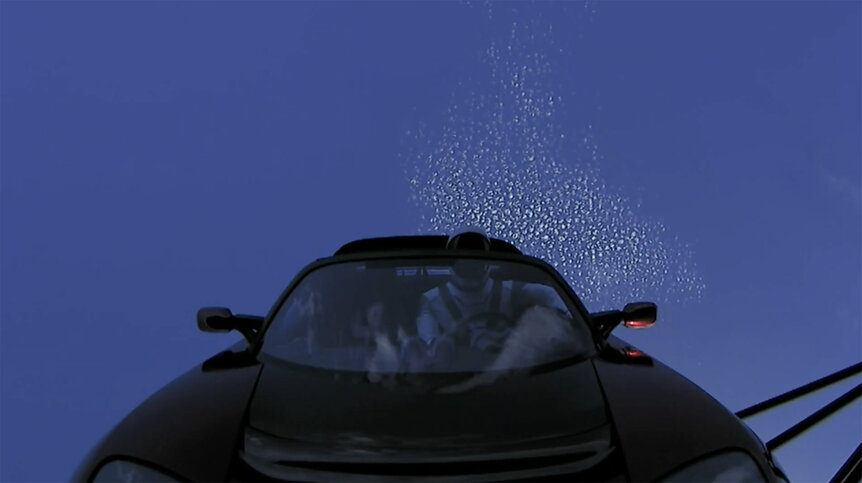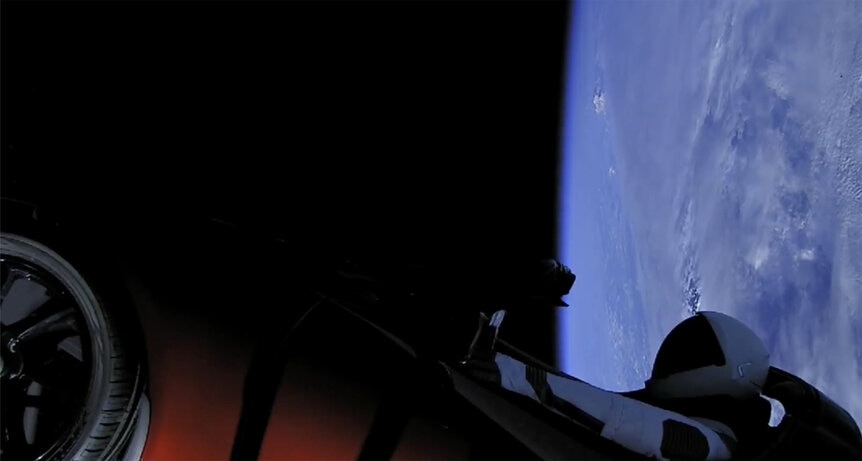Create a free profile to get unlimited access to exclusive videos, sweepstakes, and more!
UPDATE: Falcon Heavy roars into space!

Wow!
At 15:45 Eastern time, February 6, 2018, the SpaceX Falcon Heavy rocket roared into life, soaring skyward on what looks so far like a perfect launch.
While a SpaceX team crowd cheered in the background, the SpaceX live webcast showed amazing views of the launch of the most powerful rocket in current use. At about 2 minutes 30 seconds after launch, the two side boosters cut off their engines, separated from the center booster, and began their descent back to Cape Canaveral.
Just after T+8 minutes they both simultaneously landed on side-by-side pads. That was, simply put, astonishing. It was like a ballet act.
At T+3 minutes or so the center booster engine cut off, the second stage separated, the second stage engine fired, and the upper stage continued on toward orbit. In the meantime, the center booster performed the "boostback burn" to drop it toward Earth. As I write this we are still awaiting word that it landed on the drone ship Of Course I Still Love You, about 300 kilometers off the Florida coast in the Atlantic Ocean [Update: In a press conference, Musk has confirmed the center core was lost; it wasn't able to get the propellant ignited for all three engines. Only one lit and it wasn't enough to slow the booster down sufficiently].
We're also awaiting word of the payload getting to orbit [Update: Elon Musk reports orbit was achieved, and the second stage engine reignited to boost the apogee (farthest part of the orbit from Earth) to 7,000 km)]. The fairing panels were ejected right on time, revealing the red Tesla Roadster and the Starman dummy in the SpaceX spacesuit.
The second stage and the car will coast in Earth orbit for a few hours, then the engine will reignite and the whole shebang will be on its way into deep space. Mind you, it's not going to Mars itself, but will instead be placed on an elliptical orbit that takes it as close to the Sun as Earth and as far as Mars. This is called a "transfer orbit", showing that the Falcon Heavy is indeed capable of sending packages to Mars.
I've seen a handful of launches: A Saturn V, a Delta, and a Space Shuttle that went up to Hubble. Even so, this was incredible. My heart was pounding the whole time.
Hmmm. In my post this morning, I said the most likely outcome would be a scrub. Upper level winds delayed the launch many times, but they cleared up with enough time to get the candle lit.
Sometimes, I'm OK with being wrong.
I'll update this post when I hear more. Until then: HUGE congratulations to everyone at SpaceX, to Elon Musk, and to the folks at NASA who made this event possible. Wow. Just: wow.





























